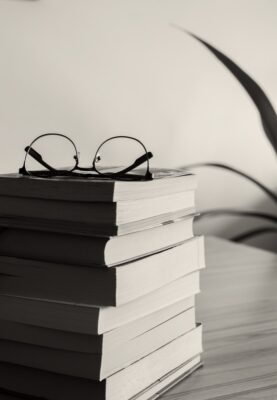 In the first part of this two-part series, I covered a few of the basics of self-publishing, primarily the more creative aspects. Here I look at some aspects of self-publishing that will help place your book on booksellers’ and libraries’ shelves.
In the first part of this two-part series, I covered a few of the basics of self-publishing, primarily the more creative aspects. Here I look at some aspects of self-publishing that will help place your book on booksellers’ and libraries’ shelves.
LOC Control Numbers:
To ensure that your books might eventually appear in library catalog databases, apply for a Library of Congress Control number, which costs you nothing. You simply add the number to your verso page, following the instructions from the Library of Congress once you get the number.
What does this number mean?
According to Library’s site, “The Preassigned Control Number (PCN) Program enables the Library of Congress to assign control numbers in advance of publication to those titles that may be added to the Library’s collections.”
ISBNs and Barcodes:
ISBN stands for International Standard Book Number. These numbers identify both the publisher and the book. Bowker provides both ISBNs and barcodes, and is the official agency entrusted with supplying ISBNs in the United States.
Why add an ISBN to your book?
According to the Bowker site:
 An ISBN improves the likelihood your book will be found and purchased
An ISBN improves the likelihood your book will be found and purchased- An ISBN links to essential information about your book
- An ISBN enables more efficient marketing and distribution of your title
- Most retailers require ISBNs
- Correct use of the ISBN allows different product forms and editions of a book, printed or digital, to be differentiated clearly, ensuring that customers receive the version they require
- An ISBN helps you collect and analyze book sales data
- An ISBN ensures your book’s information will be stored in the Books In Print database
- Books In Print is consulted by publishers, retailers and libraries around world when searching for title information
- The ISBN conveys no legal or copyright protection, however, the use of ISBNs for publications is prescribed by law in some countries
- In some countries a book will be charged higher tax if it does not have an ISBN
- ISBNs are the global standard for book identification
Note that Amazon’s KDP (Kindle Direct Publishing) will add an ISBN for you for free. This is convenient for you and a good choice IF you have no plans to distribute or place your book through any other publisher, such as IngramSpark. A downside to using Amazon’s ISBN is that the verso will read “Independently Published.” This provides you with neither the prestige nor the look your work would have if you used your own imprint.
Proofreading and Grammar Checking:
I cannot emphasize enough the importance of proofreading your book’s manuscript over and over and over. But, if you’re like me, you will miss things, like a lot of things. Ask your writer friends and just plain friends to read the manuscript. Offer them a box of doughnuts or loaves of whole-grain bread, whatever works. Hire a proofreader/copyeditor, if your wallet allows for that. But don’t skimp on this vital aspect of the writing process.
Yet, despite the eyes-on approach, errors still sneak into the works. Word processing apps offer an editing feature, which works reasonably well. I personally use Grammarly, which sniffs out large numbers of errors and makes suggestions for better usage. Its free version obviously doesn’t offer the breadth of the subscription, however. Other, similar programs exist, so it pays to investigate to find the one best suited to your needs.
But before uploading your manuscript file, run through it one last time to make sure you don’t end up with an embarrassing mistake, some of which can often appear as if by magic!
 Fact-Checking:
Fact-Checking:
Although I write primarily nonfiction, where fact-checking is de rigueur, I needed to check facts in the two books of fiction I’ve written as well.
What do you need to look for when fact-checking?
Well, it depends in part on what you’re writing about, obviously.
Be alert to problems with names (spelling), dates, geographic locations, historical events, cultural descriptions, fashion, speech habits, book titles, and so on.
Although The Fact Checker’s Bible is somewhat dated, it’s still a good place to start. You will find various subject or biographical dictionaries and encyclopedias of help, too. And, of course, there’s always Google. But … always be careful and verify the source of any information you come across.
So there it is, in a nutshell, a rough map of the path to self-publishing. Your path will differ from mine, but perhaps your journey will go more smoothly. I would love to hear your stories and experiences with self-publishing, too.
[Editor’s note: WAG would love to see articles on any and all topics of interest to writers. Please send your ideas or finished pieces to Cynthia D. Bertelsen at BlogEditor@writersalliance.org for consideration. Remember: these posts are more than just posts, for they are actual articles and can be cited in your CV/résumé in the same way you would a short story, essay, or any other writing credit you may possess.]
